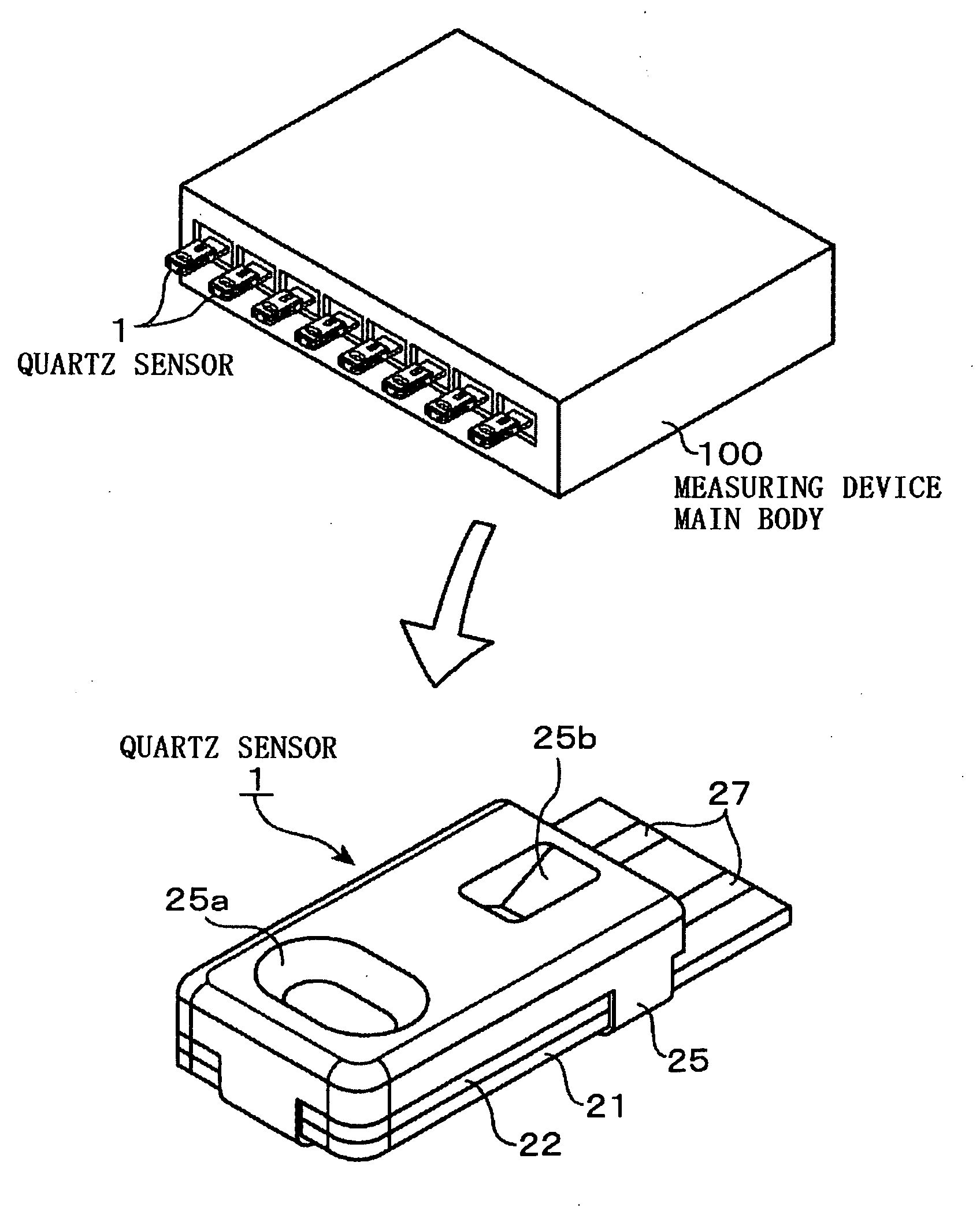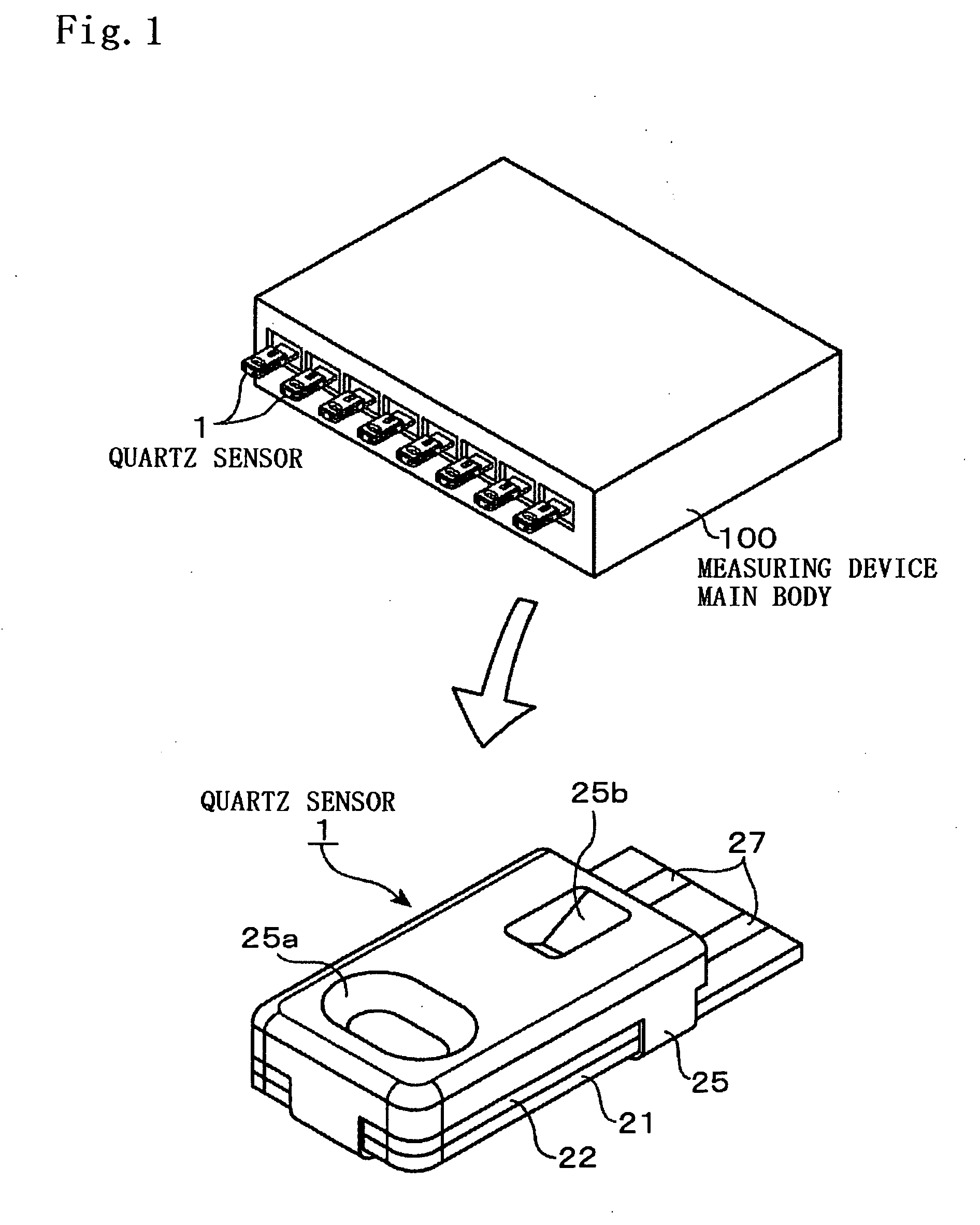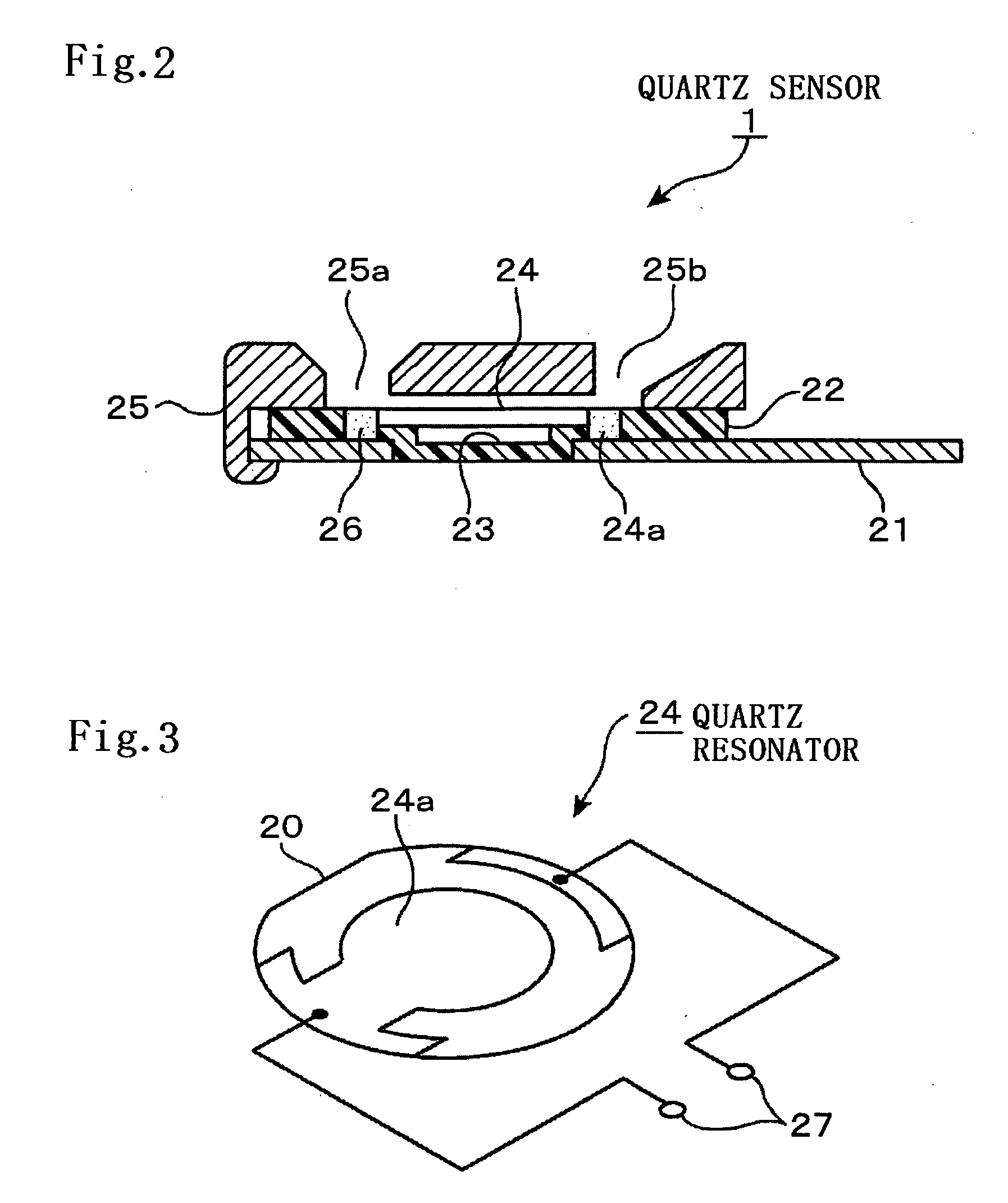Sensing instrument
- Summary
- Abstract
- Description
- Claims
- Application Information
AI Technical Summary
Benefits of technology
Problems solved by technology
Method used
Image
Examples
experimental example 1
[0046]The experiment was conducted in order to find a frequency-temperature characteristic of the quartz resonator 24, under various driving currents, and data obtained when the driving current was 10 mA among the obtained data was studied. FIG. 9 shows a difference between the frequency-temperature characteristic when the driving current is 10 mA and a reference frequency-temperature characteristic when the driving current is 0.1 mA. FIG. 10 shows the frequency-temperature characteristic when the driving current is 0.1 mA and the frequency-temperature characteristic when the driving current is 10 mA. It is understood from FIG. 9 that the frequency at 85° C. when the driving current is 10 mA is f1+0.7×10−6, where f1 is the frequency at 8520 C. when the driving current is 0.1 mA as shown in FIG. 10. The f1+0.7×10−6 frequency is detected at the temperature of (85+Δt)° C. when the driving current is 0.1 mA, while it is detected at the temperature of 85° C. when the driving current is 1...
experimental example 2
Example 1-1
[0047]In the measurement of a substance to be sensed using the above-described sensing instrument, a predetermined amount of pure water was supplied into the quartz sensor 1, and the oscillation driving power was applied so that the driving current of the quartz piece 20 became 0.2 mA. Subsequently, a predetermined amount of a PBS solution (a phosphoric acid buffer solution) containing 100 μg / ml of a CRP antibody was injected into the pure water in the quartz sensor 1 while the 0.2 mA driving current was applied to the quartz piece 20. Then, states of the oscillation frequency of the quartz resonator 24 before and after the antigen-antibody reaction were observed. The states are shown in FIG. 11. Note that in this measurement, the quartz resonator 24 with a 9.176 MHz oscillation frequency is used.
example 2-1
[0049]The substance to be sensed was measured with the same supply amount of the pure water and the same value of the driving current as those of the example 1-1, except that a predetermined amount of the PBS solution containing a 10 μg / ml CRP antibody was injected into the pure water in the quartz sensor 1. Then, states of the oscillation frequency of the quartz resonator 24 before and after the antigen-antibody reaction were observed. The states are shown in FIG. 12.
PUM
 Login to View More
Login to View More Abstract
Description
Claims
Application Information
 Login to View More
Login to View More - R&D
- Intellectual Property
- Life Sciences
- Materials
- Tech Scout
- Unparalleled Data Quality
- Higher Quality Content
- 60% Fewer Hallucinations
Browse by: Latest US Patents, China's latest patents, Technical Efficacy Thesaurus, Application Domain, Technology Topic, Popular Technical Reports.
© 2025 PatSnap. All rights reserved.Legal|Privacy policy|Modern Slavery Act Transparency Statement|Sitemap|About US| Contact US: help@patsnap.com



